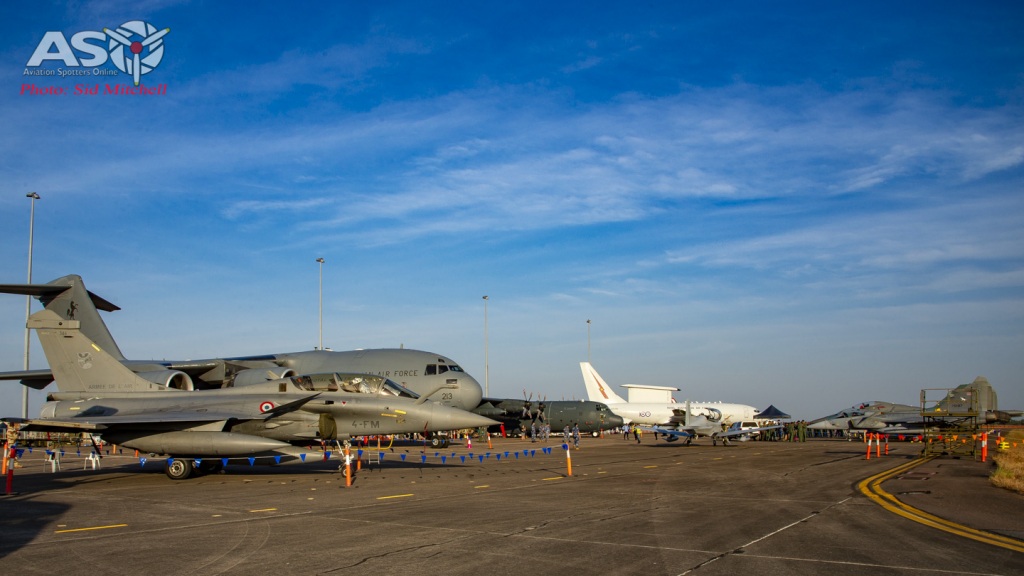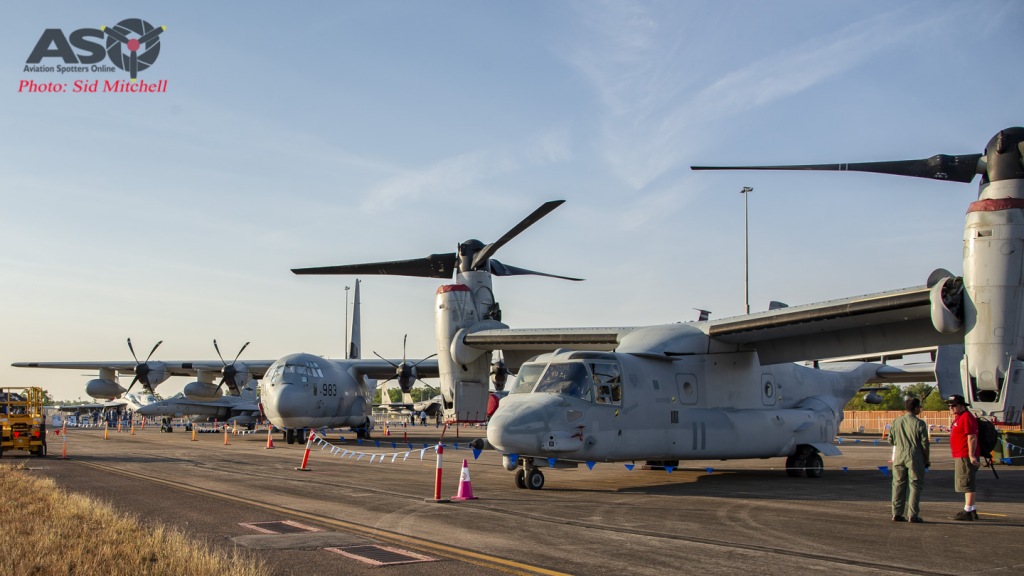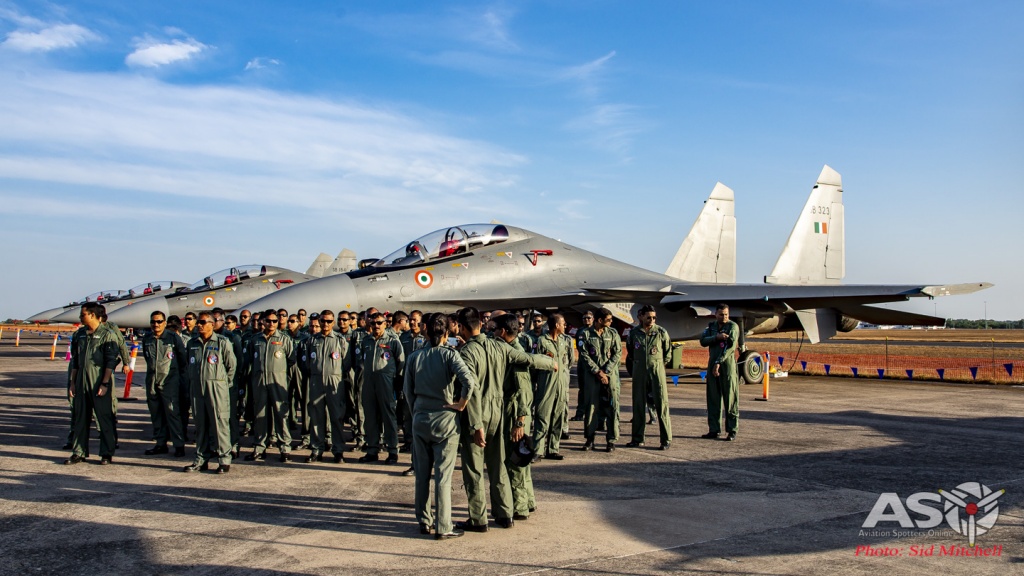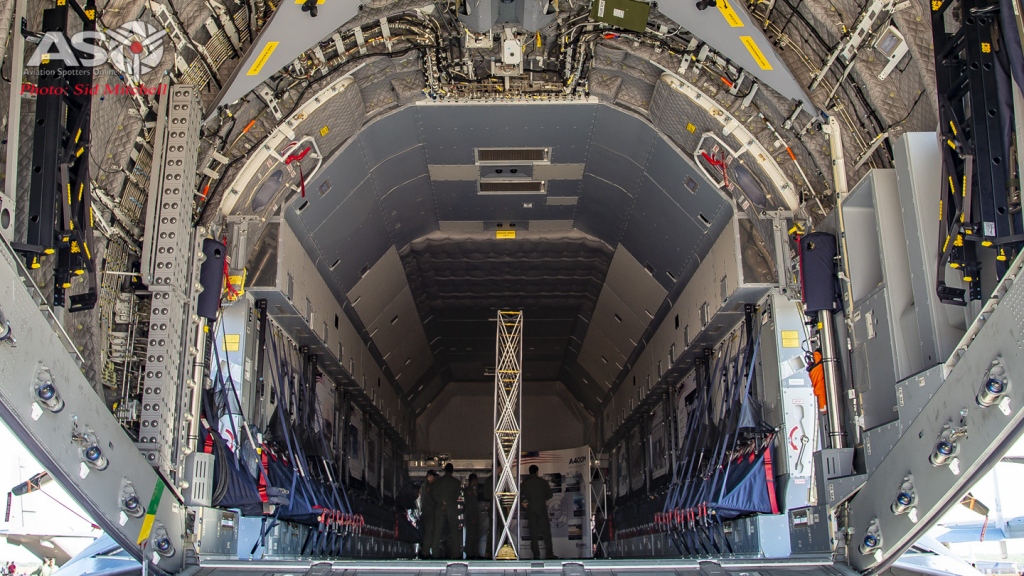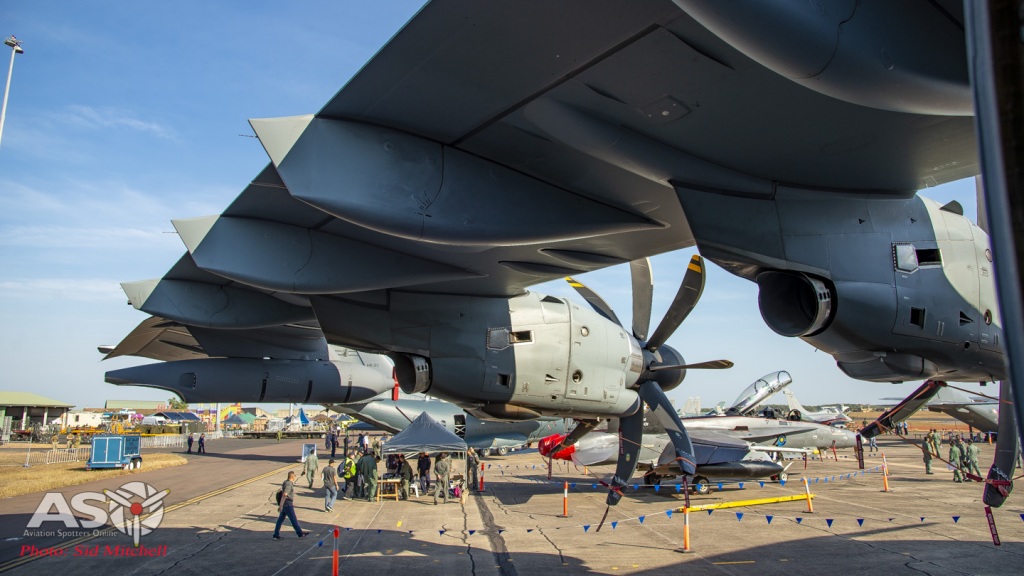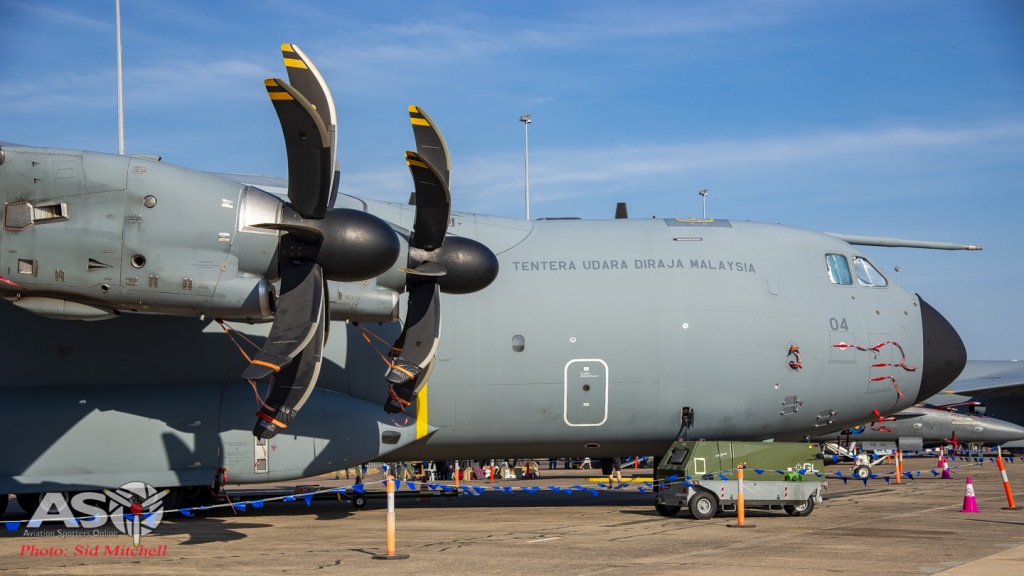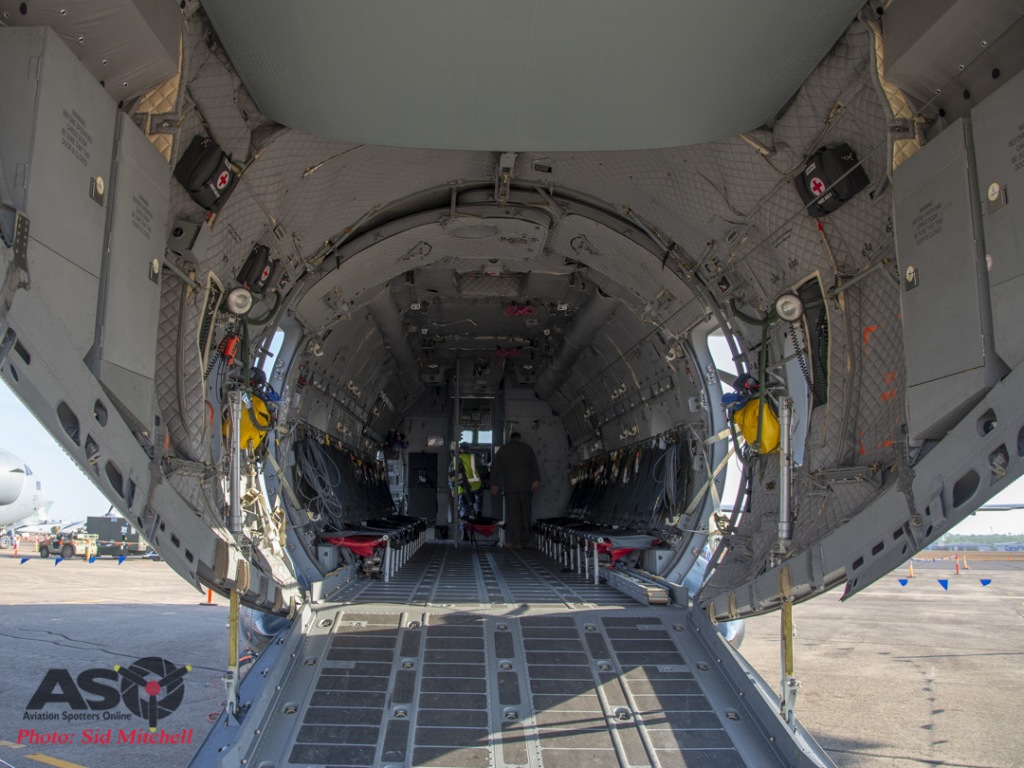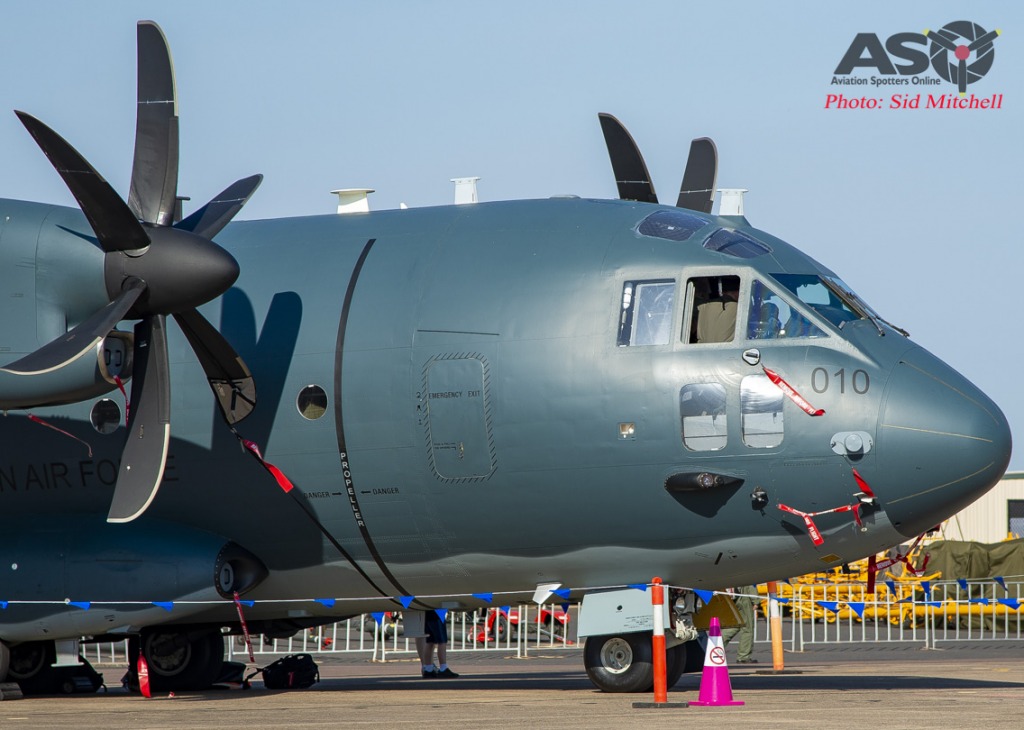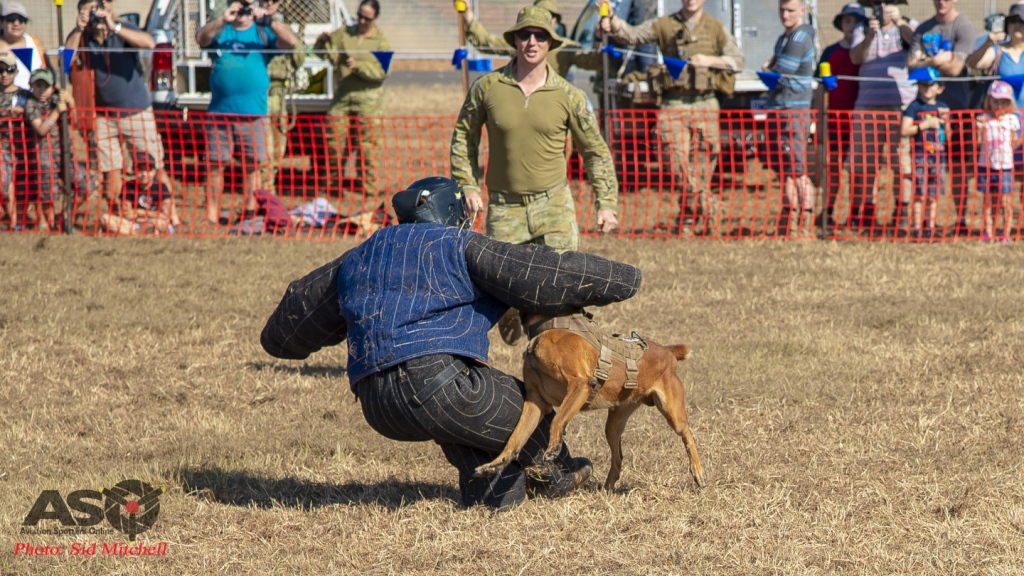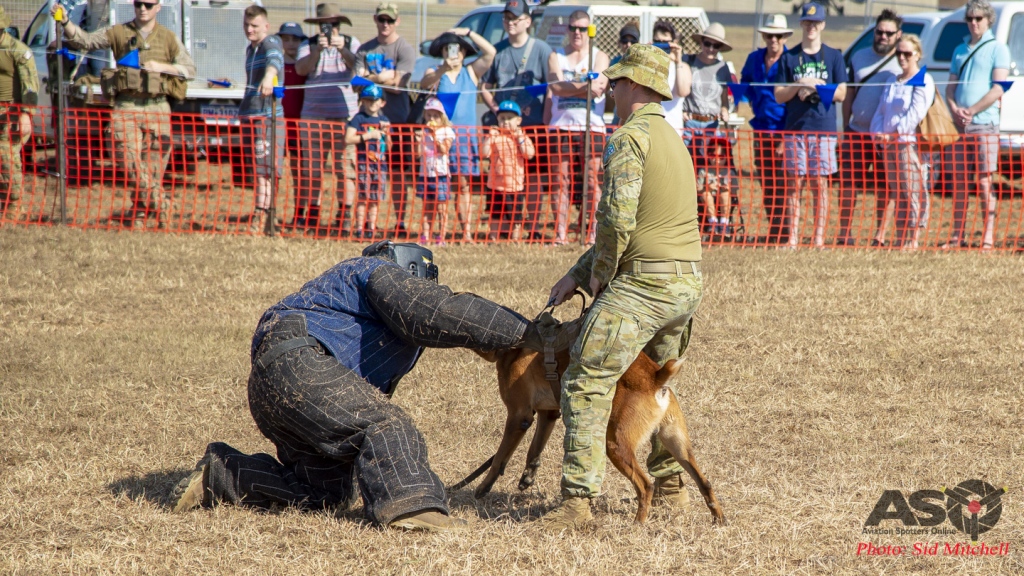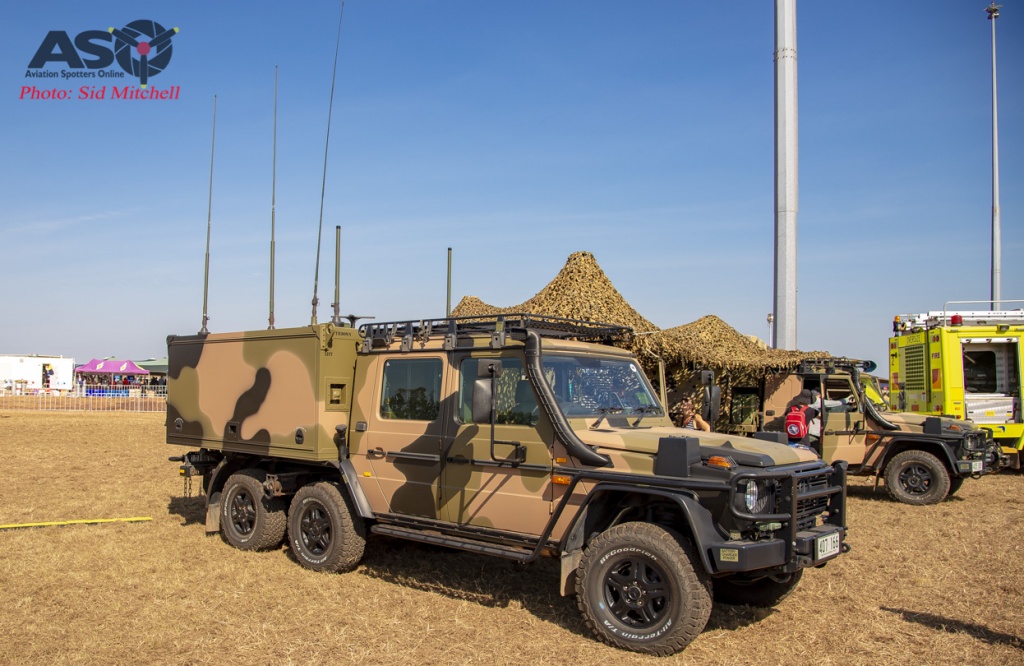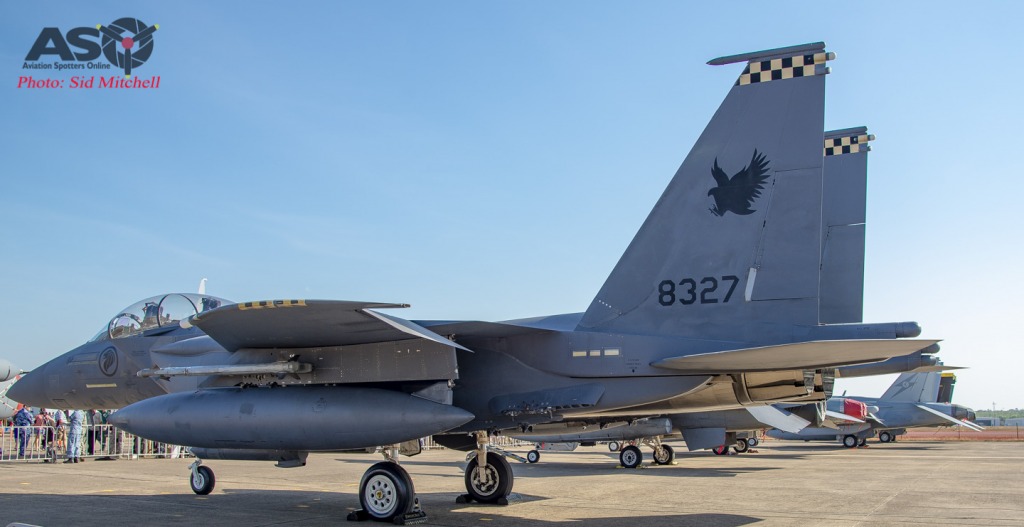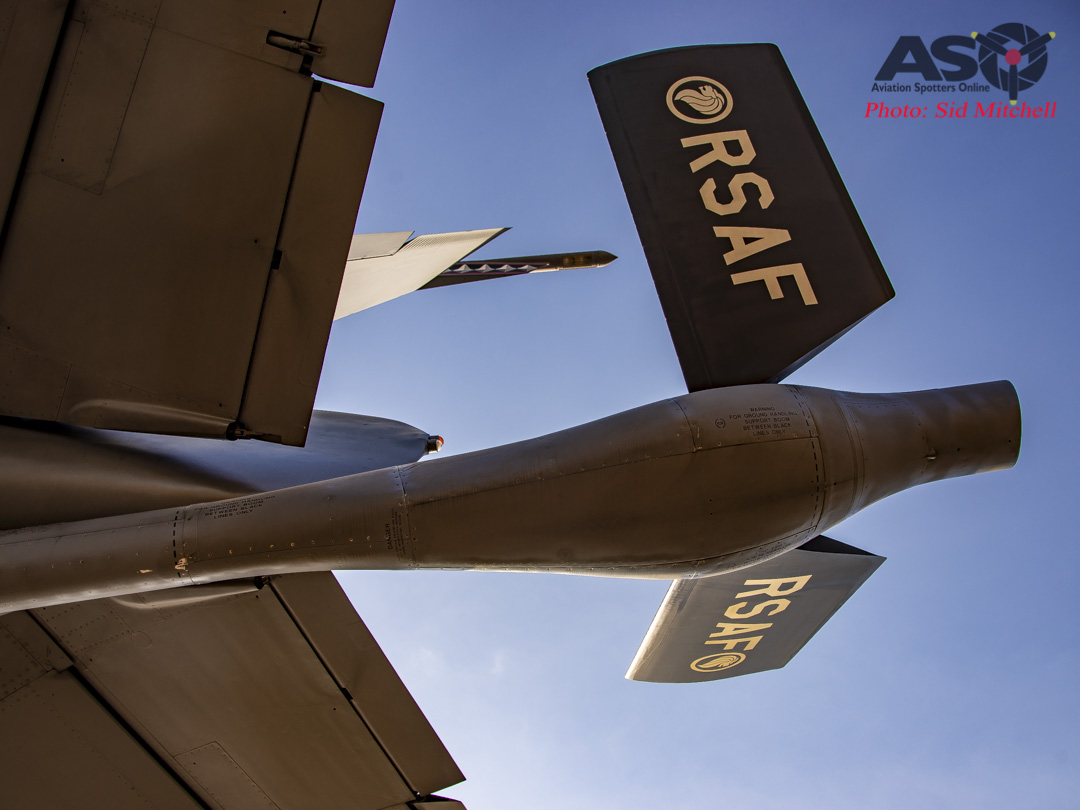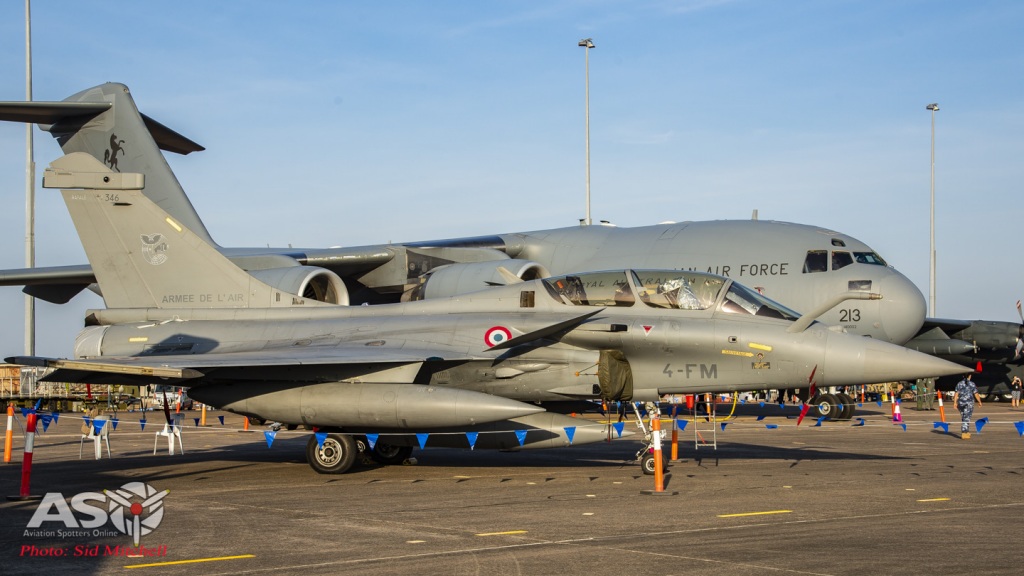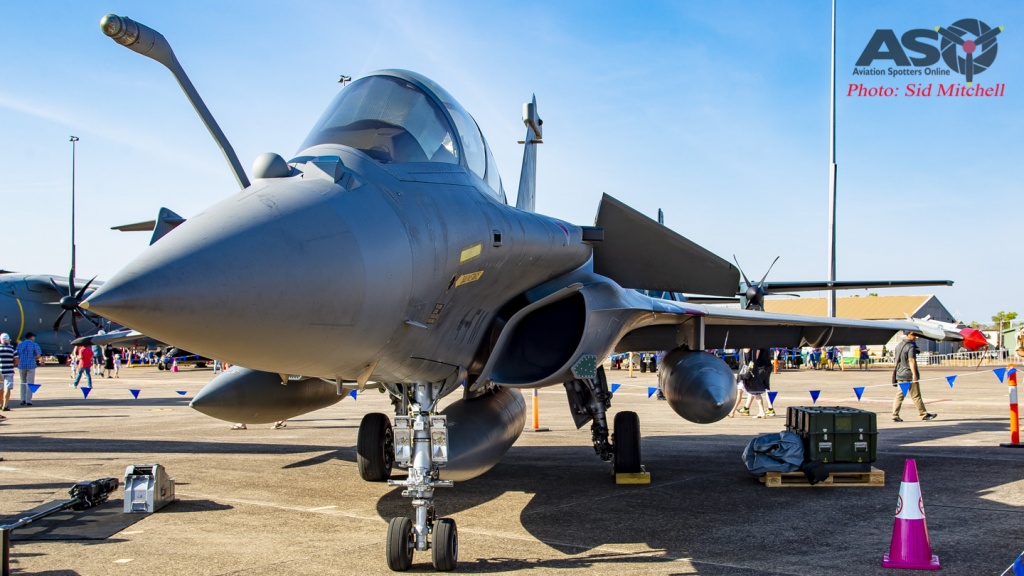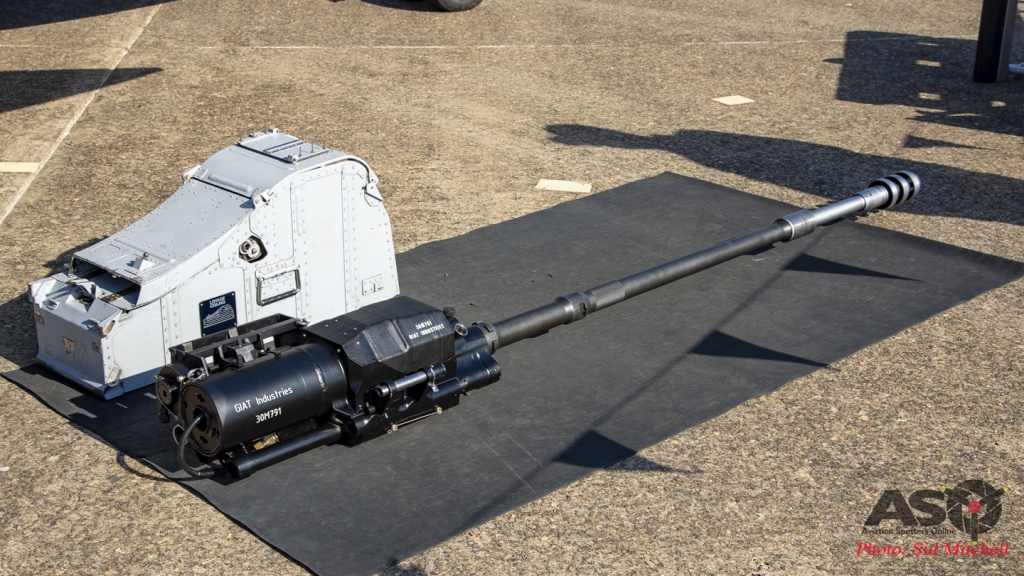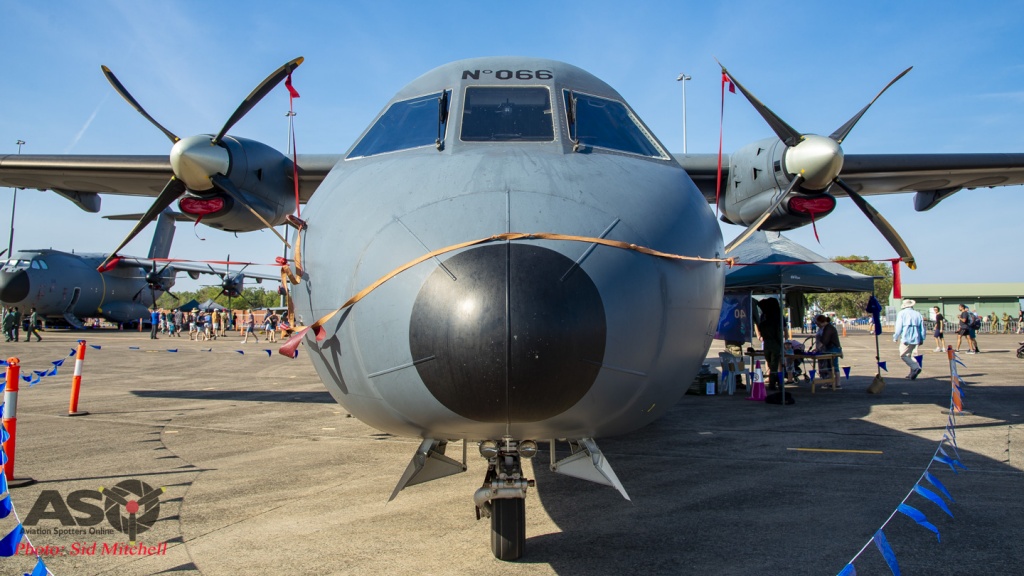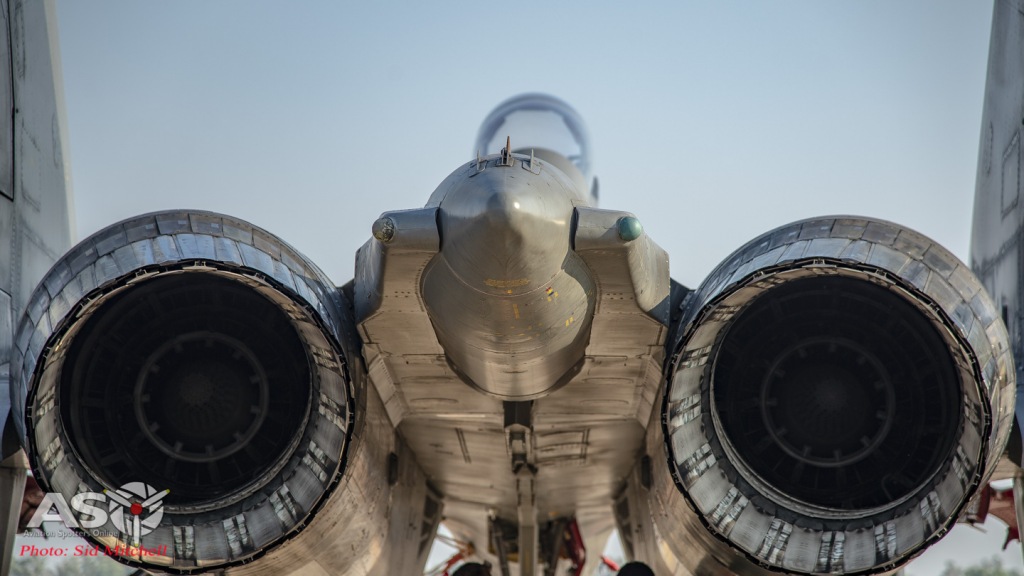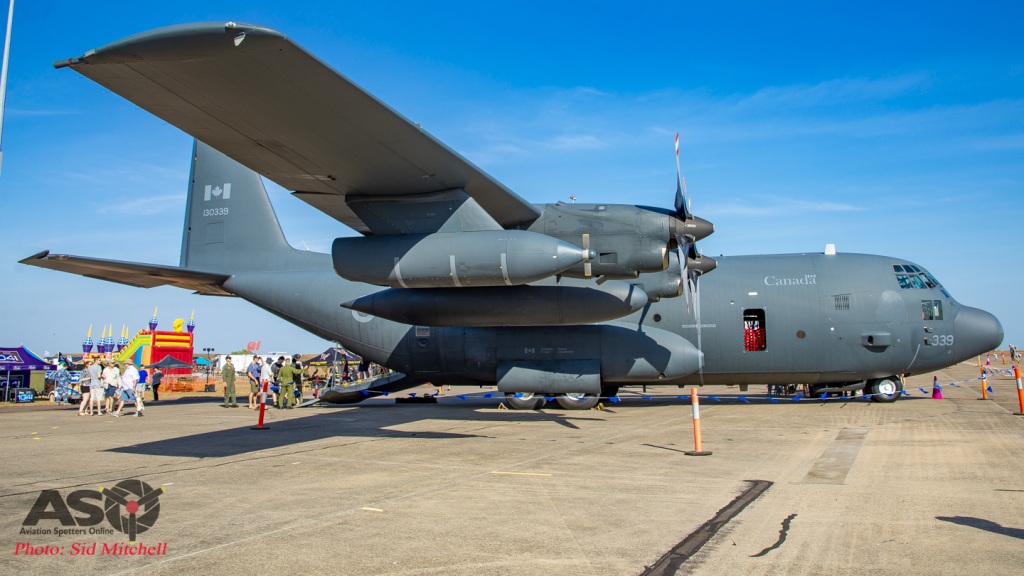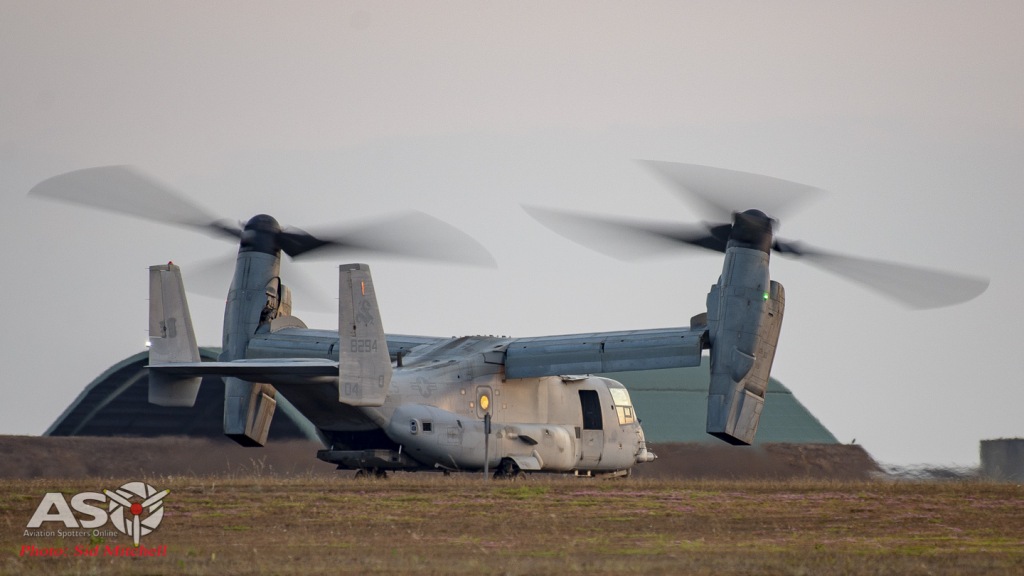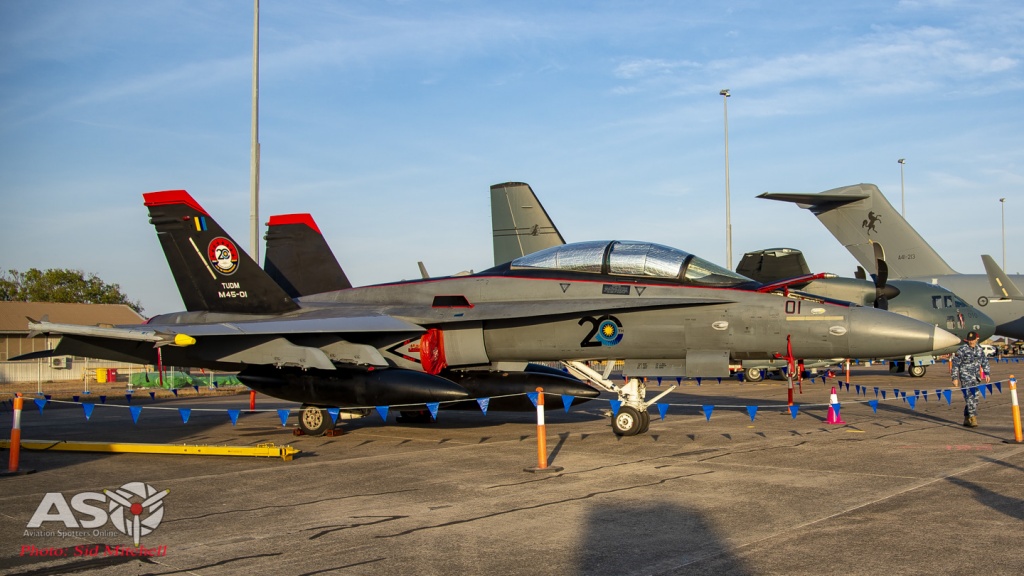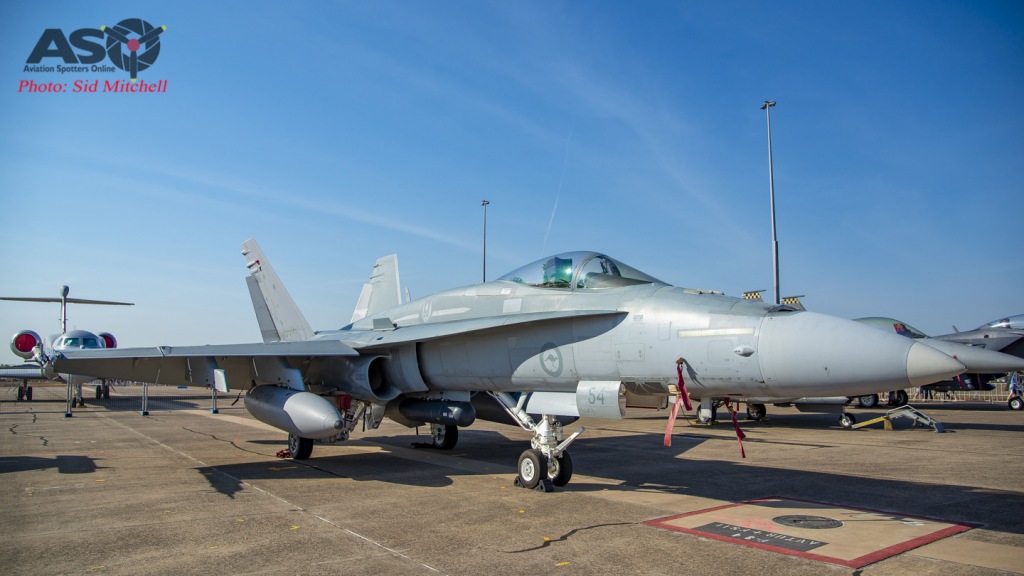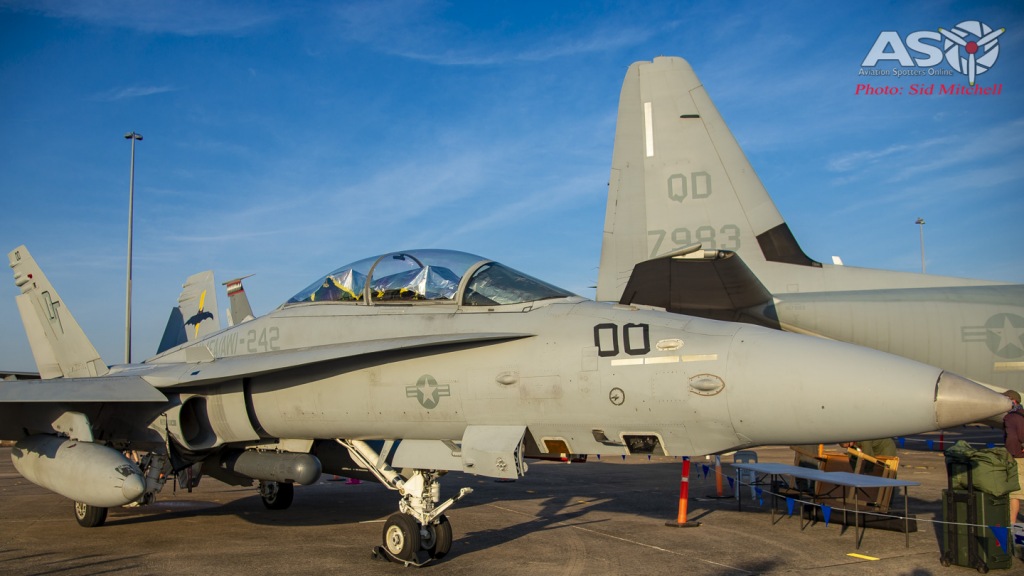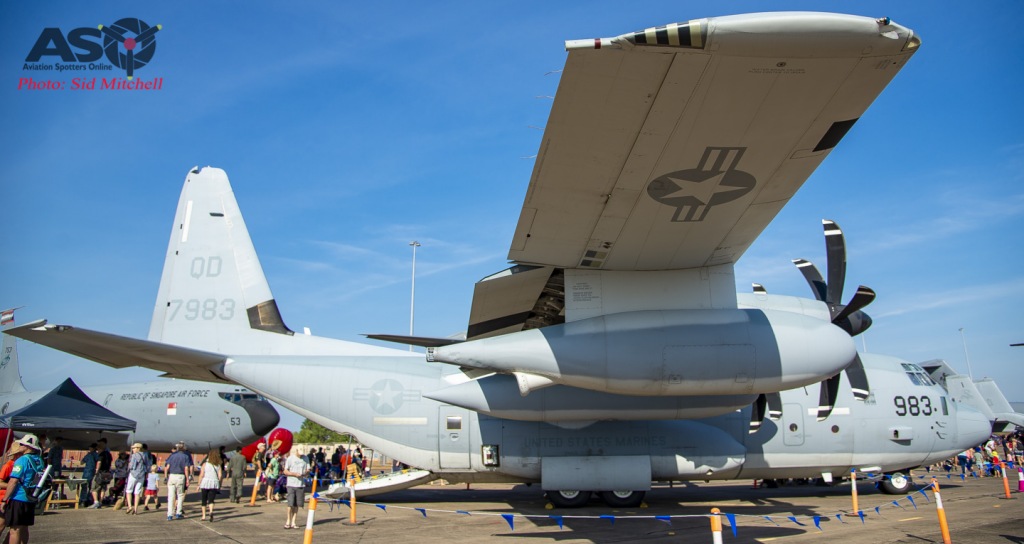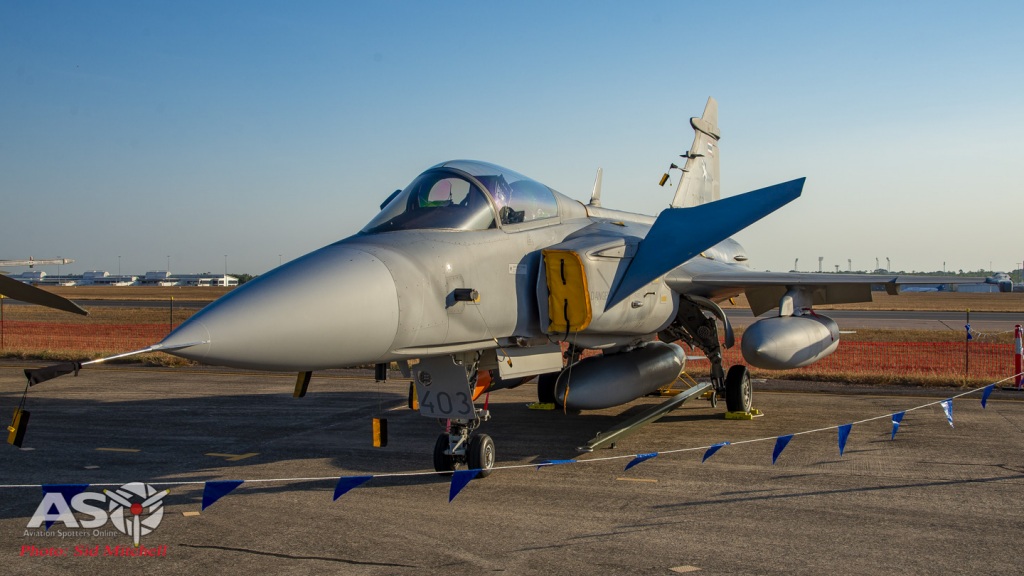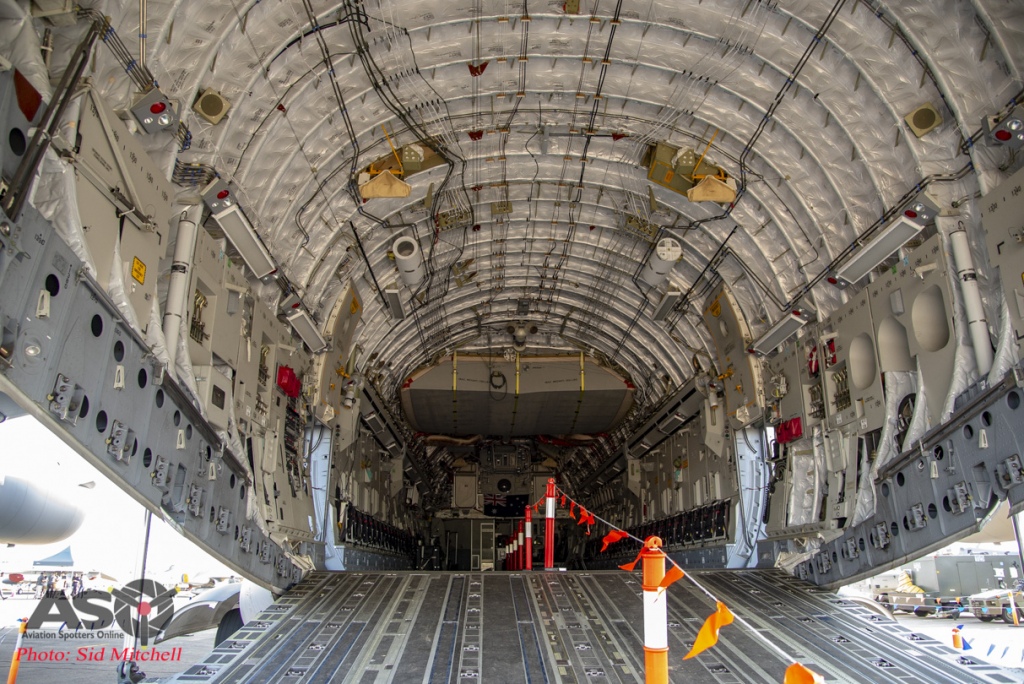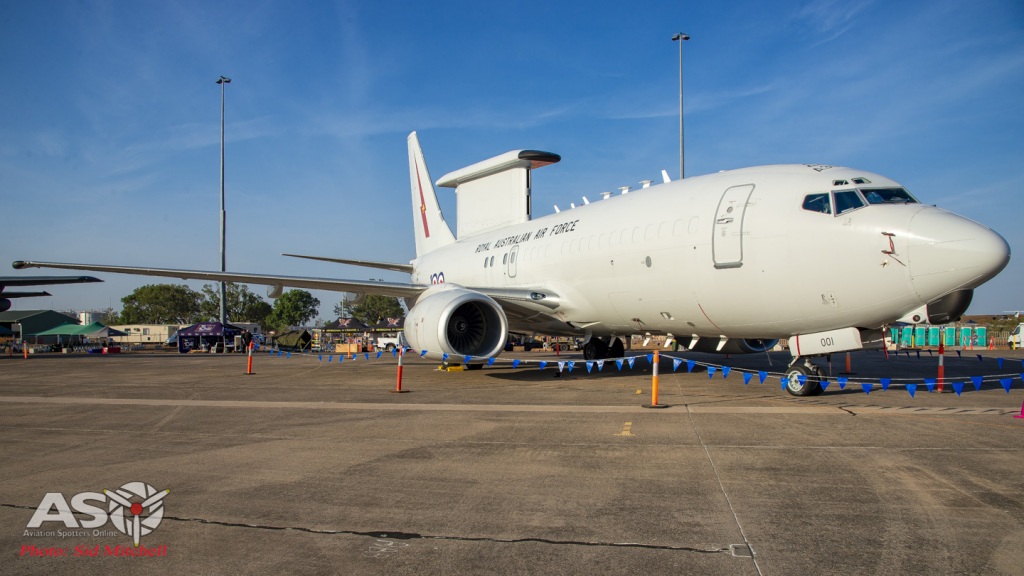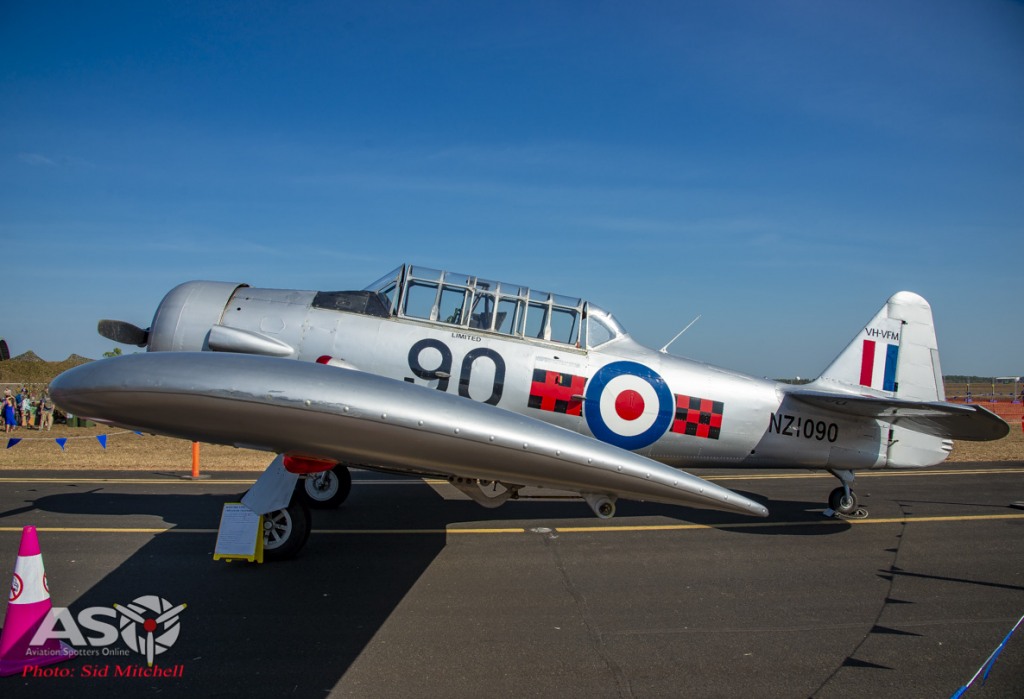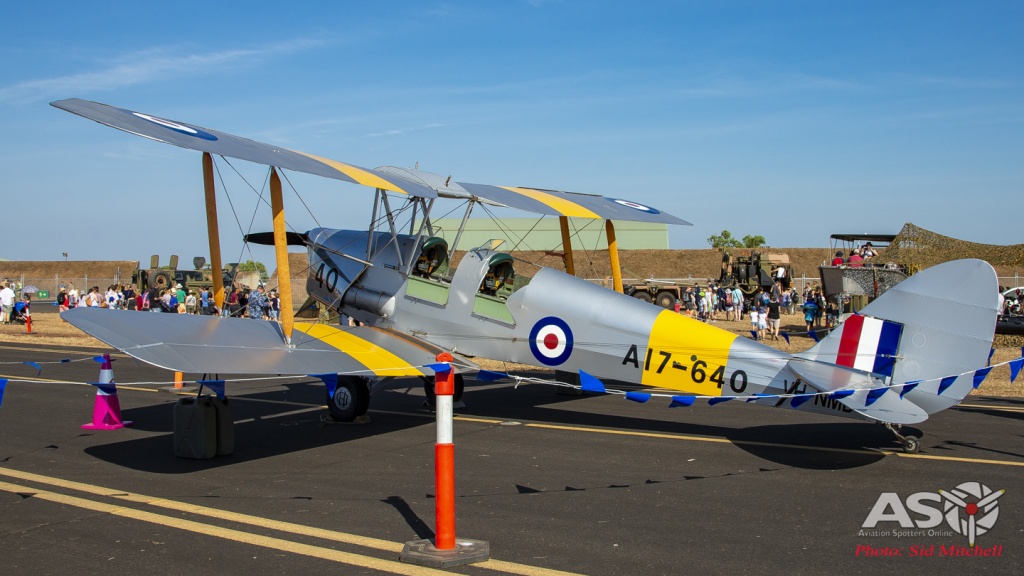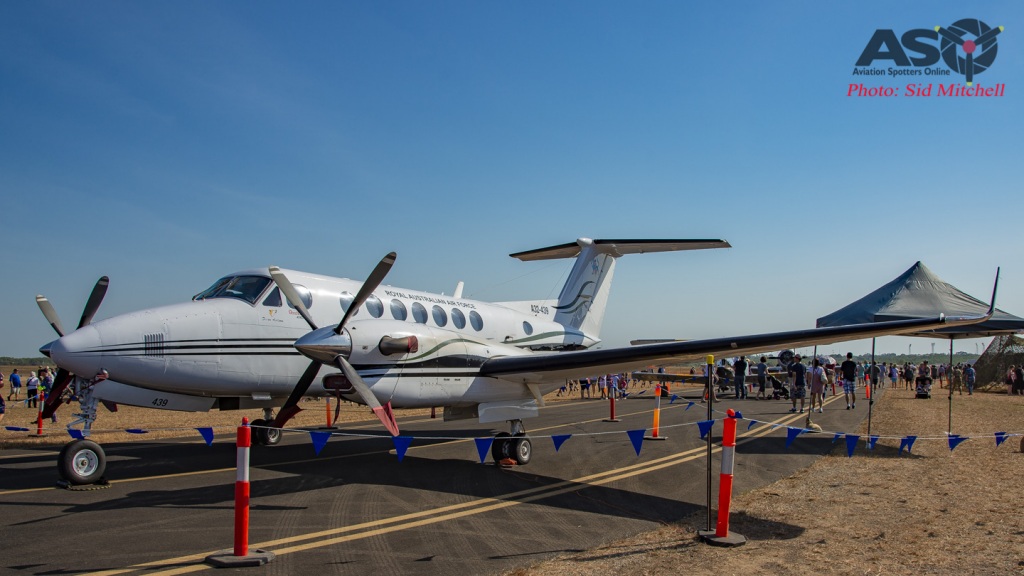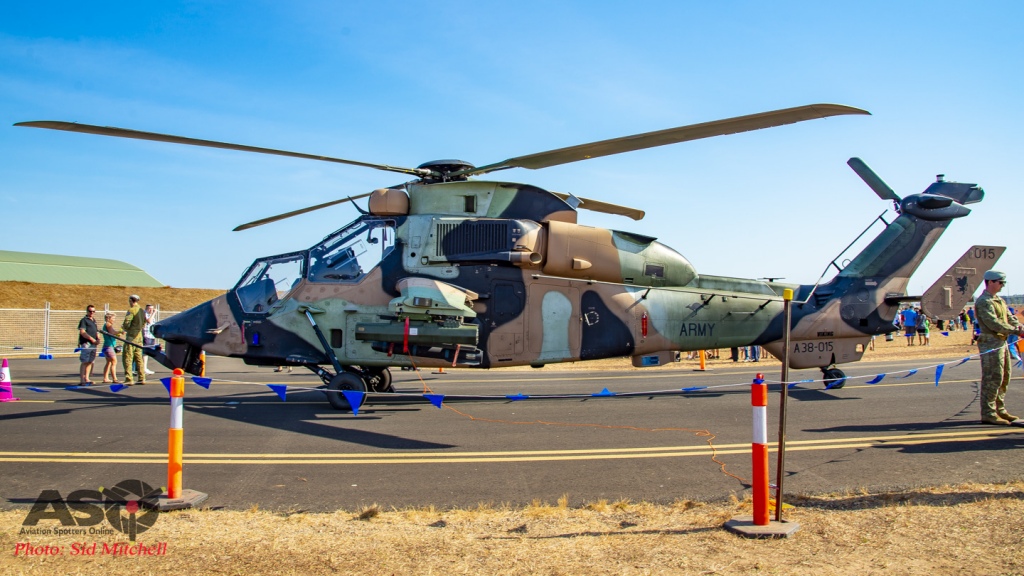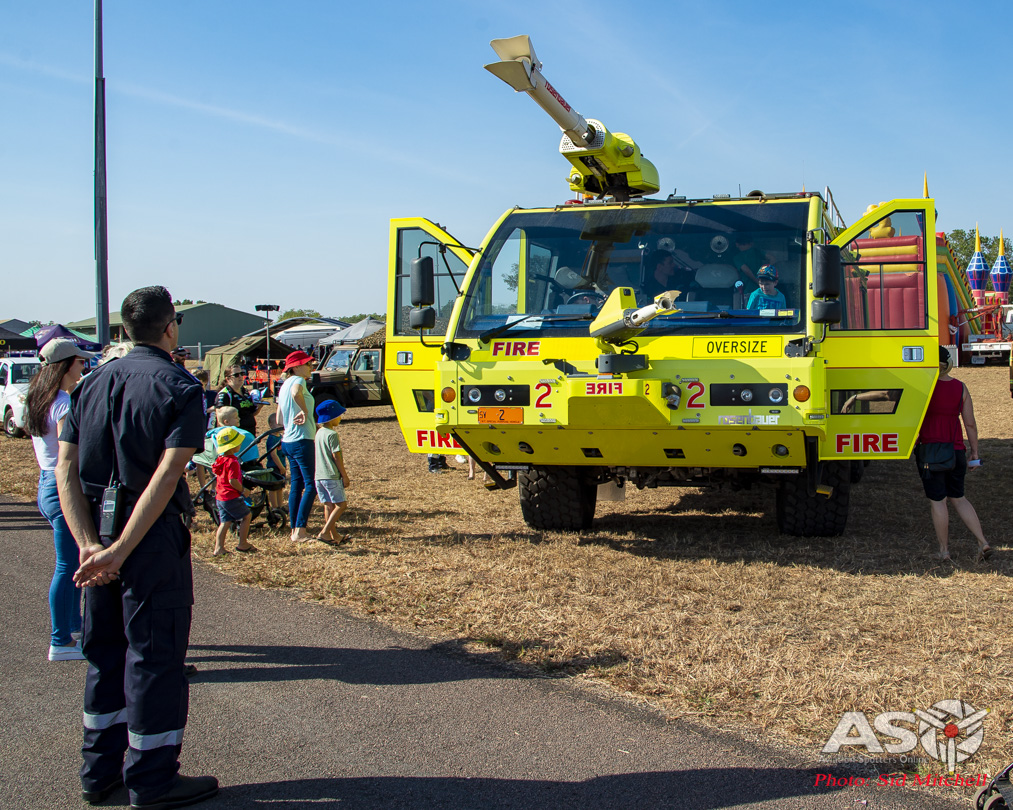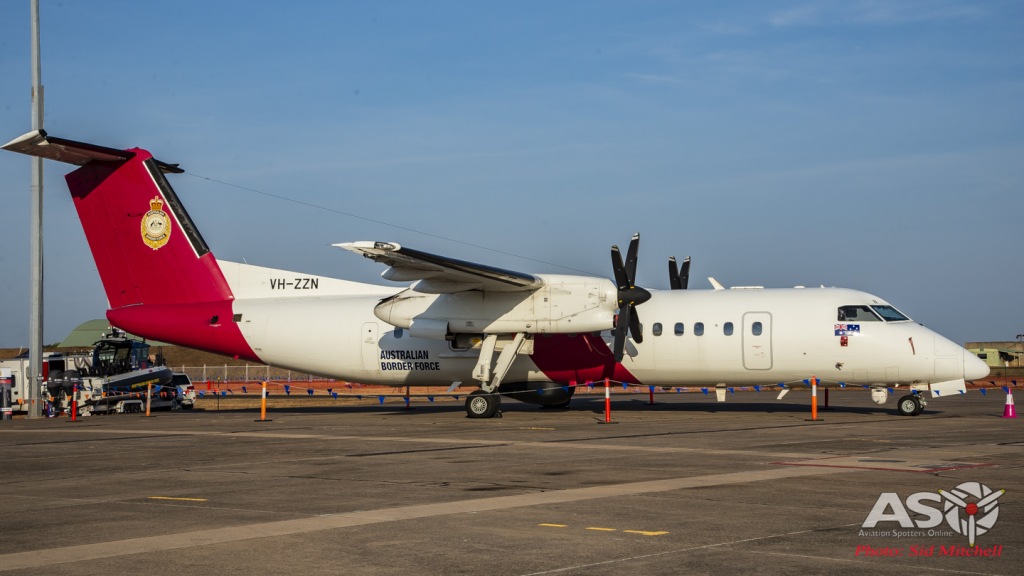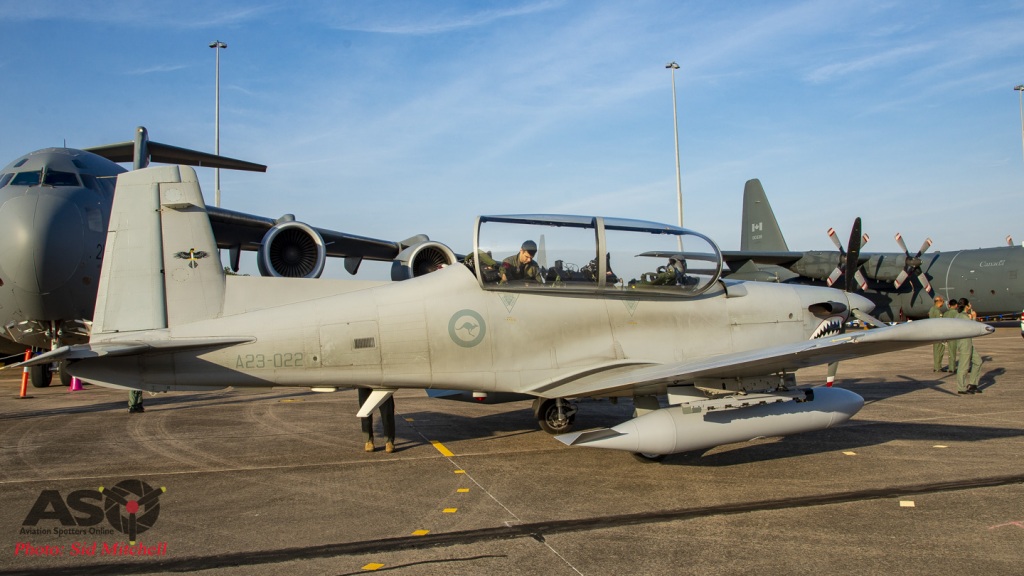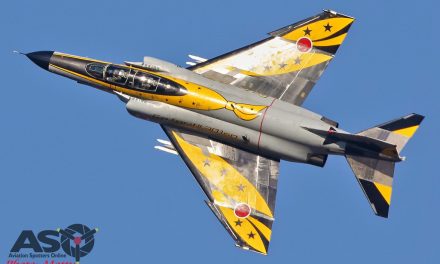The Open Day at RAAF Base Darwin is one of two most anticipated public events held during the Royal Australian Air Force’s Exercise Pitch Black, held every two years. The open day, as announced by Air Commodore Noddy Sawade at the begining of the exercise, is set up at the BRA (Bomber Replenishment Apron) on the military side of Darwin International Airport, and again this year, the visitors were able to park close by or catch shuttle busses to and from the main event.
The general public and various military visitors were treated to an excellent static display of military and civilian aircraft, emergency services, their vehicles and various marquis selling items from squadron patches and T-shirts to refreshments. The Royal Australian Air Force provided entertainment and informative live displays of the non-flying components that make up the ADF such as NorForce and 1st Brigade Artillery. Meanwhile some local aviation interest groups – East Point Model Aircraft Club and the Darwin Aviation Museum added a alternative flavour to the day. A vendor Chalet and live broadcasts by several media outlets kept all informed of the day’s events from 9am through to 4pm.
The aircraft had begun the move to their allotted spaces the morning before – a tight schedule had been arranged so that each aircraft could be positioned as per a master plan on the apron. Under the direction of Warrant Office Wayne – the tarmac controller, and with the help of 13 Squadron Duty Crew and other RAAF squadron personnel, each of the countries moved their display aircraft about – some being towed into place while others initially parked under their own power.
For the aircraft from Tindal like the United States Marine Corps VMFA (AW) 242 ‘Bats’ F/A-18D and RAAF Boeing E-7A Wedgetail, they were flown in the day before the display. One exception was a RAAF 4 Squadron PC-9A which taxied into the BRA (bomber replenishment apron) about 8.am (as scheduled) on the morning of the open day, giving some early photographers something to start the day with.
Prior to the gates officially opening at 9AM, and as part of the RAAF media access program, ASO was invited to explore the displays and photograph, video and chat to the crews from the participating counties. They were all excited about the impending crowds and were in the process of carefully arranging merchandise at each of their Squadron ‘trade’ stands or putting up information placards about their aircraft.
It is always a great opportunity for the military to engage the public – an ideal time to spark the interest of a potential new recruit to the Armed Services or just explain the aircraft and it’s role during the deployments. It is also a chance to retail official merchandise such as patches, coins and printed clothing that sometimes are not available outside of these exercises.
The St John teams were preparing for the day with a few final briefs to their teams as I was told the occasional heat stress patient was certainly expected later in the day. At the same time commercial vendors were finalising the set up of their marquis, food outlets and retail points while the local Australian Air Force Cadets completed their information tent.
As I roamed from display to display taking a few photo’s, it was great so see the crews and maintainers from different nations also wandering about looking and talking with others, occasional I heard some good natured banter and laughter between them, a relaxed day for them before they ramp up the pace again in the following weeks.
And of course while it was quiet it seemed the perfect opportunity for the teams to take a group photo in front of aircraft, especially the Indian Air Force team. It has been amazing to see the amount of social media put out by each of the air forces – a great way for us and the world to see how they operate behind the scenes.
A few of the larger displays were open to walk through and the massive Royal Malaysian Air Force Airbus A400M Atlas was one I strolled through first up. It is amazing how well concealed much of the hydraulics, electrical wiring and rigging is where the passengers sit. The A400M can be configured for pretty much all conceivable roles that could be asked of a heavy lifter – standard cargo, palletised freight, vehicles (heavy and light), liquid bladders and of course fully kitted soldiers or paratroopers.
I talk with one of the crew of M54-04 who explains some of the specifications. ‘It can carry 30,000 kilo’s from Air Base Butterworth to Darwin but for this trip – less, because we have the refuelling ability” He is referring tho the two pods that are installed on the wings.
I ask if they have refuelled any coalition aircraft while on the deployment but he says “No – we can only refuel TUDM (Royal Malaysian Air Force) F-18D – only certified, not for other fighters at Pitch Black” A group of excited Air Cadets arrive so I wish him luck and leave him to deal with what will no doubt be a myriad of questions.
The RAAF’s Alenia C-27J Spartan has had an enhanced role this Pitch Black – operating from Batchelor Airstrip about 120km from Darwin. I had a chance to chat with a Warrant Officer Loadmaster while in the cargo hold and ask him about his experiences with the new fleet addition. He has a great deal of Hercules experience and explains that despite public perceptions “The Spartan is definitely in a class of it’s own – it’s not a baby Herc and its not a new version of the old Caribou.” He really likes the later build C-27J’s and has a laugh when he says the earlier ones were a little bit ‘bespoke’ in their construction – “hand built like a Ferrari.”
The adaptable roles of the Spartan can be seen as he points to one of the two rear window by the side doors – ” For example over here.. we can clip in a seat, remove the cross bar over the window and it becomes an observers position – and we can initiate the counter measures for self defence if we see something nasty – that’s independently of the aircrew up front …because they will be busy looking forward.”
He goes on to show me the floor mounted palletizing system – “It is removable but takes pretty much a full shift in the hangar to do that job – so we just leave it in place. It adds a bit of weight but that’s no problem as the same engines on this as are on the C-130J Hercules.”
I ask how do your special passengers like it? He laughs and says “The Forces teams (Australian Army) hop on with two quads and a couple of teams – they love it…love how we can get them into tight spots where a Herc can’t go and they pretty much just ride straight off. We are looking at the HALO ops too”
How about the ride? He points up and tells me “The wing is a three spar construction – very robust (can handle operational loads in the region of 3G) and when we are operating low it can be a really rough ride – have had some tough army guys really crook and yelling that they “don’t care – just get me off this thing”.
Moving up to the cockpit I sit in the copilot seat and like how organised it appears. FLGOFF Oran tells me how he likes flying the Spartan -” More than enough power available (that Hercules power train again) and will go wherever it is pointed, especially the climb angle” And you use night vision goggles on some missions? “Yes – both of us (aircrew) use them when flying NVG(Night Visual Goggles). We have a much larger total field of view outside that way” FLGOFF Oran pulls a cover from overhead near the fold down HUD revealing aditional window – “that helps sometimes too” Stargazing? – he just laughs. What is it like to use the HUD? – Pointing to the red soft cover he continues, “Its great – not the same as the larger aircraft with fixed HUD but this system works well for the 27 and it self-aligns for us – the occasional blip but good.”
“It’s really a great battlefied airlifter – very quick for time sensitive critical support missions – it fits in perfectly – carries the most common sized loads – up to 10 tonnes. It doesn’t need to be long range as the 27 is very fuel efficient, but we do hop between refuelling points and will land at most remote landing fields. We can, and do, lower the tyre pressures of the mains and nose to spread the load at some of the more austere locations.”
“In the case of Batchelor this year, where we are operating from, it’s the first time we are operating out of there during this Pitch Black exercise”
I thank him and leave by the crew door and wander around the Spartan thinking, it seems to have fitted perfectly in place within the RAAF fleet.
As the crowd starts to build some head towards the cordoned off area where the RAAF Security and Military Dog teams are gathered. Some poor soul is dressed in one of those protective padded suits and running across the paddock… yep, the Dog Handlers have ‘released the hound’ and within seconds the ‘intruder’ is brought to the ground with a cheer from the onlookers. Another crowd pleasing event on the open day.
There are some smaller displays set up along the grass – the RAAF band is belting out some tunes as I call in under some camouflage netting strung between two Mercedes 6×6 Communications vehicles.
No. 1 Remote Sensor Unit (1 RSU) is a unit formed in 1992. The low profile unit operates a number of sensor platforms including the Jindalee Operational Radar Network (JORN) and space based infrared and surveillance telescope systems. They are tasked with maintaining a continuous tactical picture of Australia’s Air and Space regions of interest.
The communications pod on the rear is open on one vehicle and they have a monitor screen on a table nearby being fed with live data of civilian aircraft over Northern Australia – each with a tab indicating various target parameters such as velocity, altitude and ID codes. No doubt they would be more than capable of tracking any non-civilian movements if required to do so.
As the day progresses I manage to catch up with ASO Videographer Mark Pourzenic and we chat about all the displays we had been through agreeing it is pretty awesome. He speaks with F-15SG Pilot Nick while I chatted with Marvin, a WSO on the F-15SG. Marvin says “they enjoy the amount of space in the Northern Territory and the facility at Delamere Range.” I ask what is their main role – “We mainly perform strike role with own designation and have been using JADM on the missions, we but can do air to air roles if directed.”
The Republic of Singapore Air Force, F-15SGs and F-16C/D’s have been tanked from their own KC-RSAF KC-135R Stratotanker which Singapore has used when transiting their jets to the exercise – they will do so again with just one top up on the way home according to Marvin.
First time attendee, the Armee de L’Air Dassault Rafale B attracted some interest from the public being it’s first appearance at a Pitch Black Exercise. The three Rafales’ were refuelled by a 33 Squadron, RAAF KC-30A MRTT for more than half their journey from France. Just another example of interoperability between partners – even if it is only a long distance ferry flight.
The Rafale display also had the 30mm GIAT 30-M791 cannon on display with a 125 round mgazine. Dassault has remained with the 30mm sized aircraft cannon and many RAAF personnel would remember the Mirage had two 30mm DEFA cannons (120 rounds each)
The French Air Force has again deployed their CASA CN-235 Tactical Transport Aircraft to Darwin from Nouméa-Tontouta (New Caledonia) – we have seen the CN-235 during several past exercises in the Top End.

CN-235 from ET 52 Tontouta
Possibly the most talked about aircraft this week has been the Indian Air Force Sukhoi Su-30 MKI. It’s the first time India have been to Pitch Black in a flying capacity – previously as observers but not deploying fighter aircraft. The SU-30 is a big aircraft compared to it’s exercise peers but the IAF have performed Force Integration Training (FIT) without any issues, which is part of what the exercise is all about – interoperability – including refuelling from the 33 Sqn KC-30A MRRT during the exercise.
What is probably the most unusual feature of the Su-30MKI is the thrust vectoring nuzzles – marvel of engineering in themselves.
With about 60 fighters at Pitch Black, air to air refuelling plays an important role and the Royal Canadian Air Force has again sent a Lockheed CC-130HT all the way from 435 Squadron, in Winnipeg. The Hercules carries an on board tank that provides up to 24,000 lbs of fuel, dispensed through two wing pod – drogue and hose assemblies at more than 1100 litres per minute.
One of the more unusual exhibits and very popular as they have been flying about Darwin since May, is the United States Marine Corps, Boeing MV-22B Osprey. The Ospreys tilt-rotors are here as part of the Marine Rotational Force -Darwin 2018 and the public constantly filed through the display pretty much all day. The crew and maintainers were there to answer the questions – “We’re old hands at it” one said as he pointed out the thermal diffusion plates in the exhaust of an engine.
The Hornet in it’s various guises plays a major role in Exercise Pitch Black, and there were more than enough on display for the visitors to view. One of the more colourful displays was by the TUDM – the Royal Malaysian Air Force and their F/A-18D Hornet M45-01 and it’s 20th anniversary scheme. It was nice to find out a local Malaysian identity Pn. Samiah and her family had hosted the RMAF guys for an evening meal of traditional Malay cuisine – Darwin is know for it’s multicultural hospitality and I am sure they really enjoyed themselves.
Making a debut at Pitch Black was the Royal Australian Air Force EA-18G Growler from No. 6 Squadron at Amberley. The Growler is fitted with an electronic jamming suite that adds to the complexity of the latest exercise scenarios.
The other large airframed Hornet in attendance is the RAAF’s F/A-18F Super Hornet from No. 1 Squadron, also Amberley based. 1 Squadron has trained in the N.T several times over the last few years including back in PB16. The have brought their colour tail, A44-210, which celebrated 100 Years in 2016.
Attending for probably it’s 3rd last Pitch Black is the long serving F/A-18A from the RAAF. The Classic has been attending Pitch Black for about 30 years now and will be replaced by the F-35 Lightning II. Although A21-54 has 3 Squadron markings on the tail, it has been common practice to pool the Hornets into the remaining operational squadrons for their twighlight years of RAAF service, and not repaint them.
77 Squadron, Commanding Officer ‘Easty’ has mixed emotions about the retirement of the Classic. He is a veteran of deployments to the Top End and says with a hug grin – ” I guess I have probably spent a year in total on deployments up here over my time in the RAAF”
Another coalition partner that has returned to the Northern Territory are the ‘Bats’ – USMC VMFA(AW)-242. The Bats are based in Tindal this exercise but were in Darwin last year for the Air Weapons Instructor Course exercise. For the open day they flew up one of their F/A-18D “OO” fitted with the ATARS – Advanced Tactical Airborne Reconnaissance System. Only a few have this front end modification in place of the M61A1 Vulcan in the gunbay.
Supporting the USMC deployments from Japan for fixed and rotary squadrons have been the “Sumo’s” – a transport and air to air refuelling Squadron who operate the Lockheed KC-130J Hercules. The Sumo’s are quite a familiar sight over Darwin and Tindal each year resupplying and performing tanker operations for the US Marine Rotational Force deployments.
After last Pitch Black with their F-16 deployment, the Royal Thai Air Force has returned again with their SAAB JAS-39 C/D Gripen from 701 Squadron, out of Surat Thani. The “Ferocious Sharks of the Andaman” were here in 2014 so are again a familiar participant of Pitch Black.
While we are looking at single engined fighters you cant go past the timeles General Dynamics F-16, here in several versions. The Indonesian Air Force (TNI-AU) has one of the more colourful schemes on their F-16C’s – the ‘Millenium’ scheme of their 3 Squadron aircraft who are another F-16 Squadron, that has returned for PB2018.
Singapore and the United States – long term participants can be relied on to deploy their F-16’s to Australia. The RSAF spend a lot of time deployed to the NT and brought a mix of 140 Squadron and 143 Squadron tailed jets from Tengah Air Base but did not have one on display this year.
The USAF deployed F-16CM’s from the 80th Fighter Squadron this time, plus one 35 FS tail. The ‘Headhunters’, from Kusan in Korea arrived into Darwin being refuelled by KC-135R from the Illinois Air National Guard.
As host nation for the three weeks the Royal Australian Air Force set up exhibits also. The Air Mobility Group had the Boeing C-17A Globemaster III from 36 Squadron on display, it is the main cargo lifter for Australian tactical deployments and humanitarian missions.
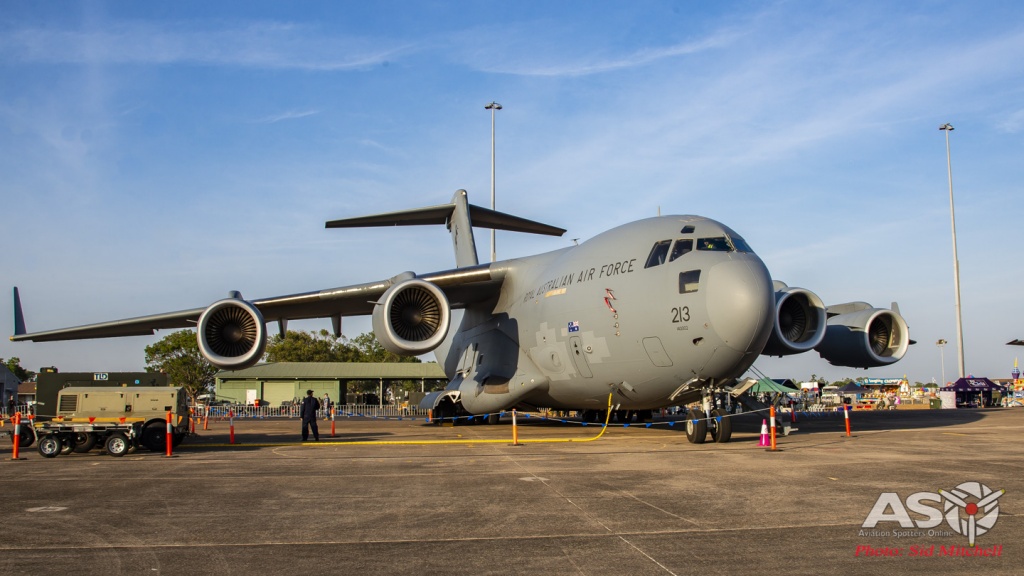
RAAF C-17A Globemaster III
I am always amazed at the amount of items stowed in cavities along the walls of the fuselage in the C-17A, some neatly covered out of sight and others ready at hand to use – tie down kits, spares, adapters for reconfiguring the cargo space for different purposes. The Globemaster has proven to be a wise investment for the RAAF and has many years of service ahead.
Near the end of the apron is A3o-001 the RAAF’s Boeing E-7A Wedgetail with its unusual vertical array on top of the fuselage. No. 2 Squadron has been operation the Wedgetail for some years now and it remains a critical asset for the electronic surveillance and control network in the ADF. A30-001 was recently in the UK and still displays the 100 year RAF symbol that was applied in addition to the RAAF Roundel to celebrate the Royal Air Force’s 100th year celebrations.
Off the main apron and down a taxiway are some smaller aircraft. A couple of local aircraft often seen about Darwin CBD and flying the coastal route are the ex RNZAF North American T6D Harvard NZ1090, VH VFM. It can be seen taking passengers up early some Sunday mornings when the conditions are perfect for a leadure flight along the coast or out to a local strip. The other vintage aircraft on display is VH-NMD, an ex RAAF de Havilland DH82A Tiger Moth, A17-640. A beautiful sight against the morning blue sky and is also hangared next to the Darwin Aviation Museum.
Almost to the end of the taxiway display is a ‘Dingo Airlines’ King Air A32-439. The KA-350 King Air has been providing support mostly from outside of Darwin RAAF Base and is another that frequents the Top End flying in and out of the smaller strips across northern Australia.
Completing the aviation component of exhibits on the taxiway is the only helicopter display here today. ‘Viking’, A38-015, is one of 1st Aviation Regiment’s Eurocopter ARH Tiger based out the local Australian Army Robertson Barracks. Being located near Darwin they can be seen flying coastal to the respective training areas and sometimes seen working with the Ospreys out at Mt Bundey and Bradshaw training areas. The Ospreys have also been using the barracks heliport as a landing facility during their rotation this year.
With most of the displays visited it was time to have a wander about and see how the crowd was enjoying the day – many had headed for the shade and refreshment stands but plenty were still arriving as others left. A few unusual sights and some more smaller attractions took my interest. The Bomb Disposal team were entertaining some children in the crowd with their remote disposal unit while RAAF and Civilian security meandered through the crowd on Segway PT cycles…. not something you see every day at a RAAF Base.
On the way back I pass by the ARFFS Rosenbauer Panther Fire Tender from the ARFF Station across at Darwin International Airport. These guys attend all the aircraft emergencies that occur on the base, be they civilian or military, and respond to fire alarms on both sides. Their area of responsibility also extends up to about 1 km beyond the airport perimeters and can sometimes be seen performing driver training around the airport in the big day-glo tenders.
Residents of Darwin sometimes hear a drone during the night – most often it is the DHC-8 from Australian Borderforce heading out or returning from offshore patrols. The crews work some odd and long hours providing a surveillance and rescue role across the coastal waters of Australia. Bordeforce also had their maritime craft on display, creating a bit of interest from the fisho’s (local amateur fishermen).
I go past the last aircraft to arrive – earlier this morning – ‘Mc Namara VC’ a Pilatus PC-9A from No. 4 Squadron RAAF Base Williamtown. 4 Sqn provide FAC training and run the Australian Defence Force Joint Terminal Attack Controller (JTAC) courses. A23-022 arrived and taxied past us this morning to park next to the RTAF Gripen, maybe for the last time at Pitch Black as the ageing PC-9A will be replaced by the new PC-21A which is almost half way through the delivery program.
I catch up with Mark who has been interviewing the military aircrews and we both agree this has been the best Pitch Black Open Day so far – a great selection of aircraft, some of them new to the exercise, some that will be gone in a few years but no matter what is here in Darwin, it always draws interest from the military enthusiasts and general public, some from as far as the UK. I know the military visitors also get a buzz from showing their aircraft off to us and we hope they enjoy their deployments – no matter how long they may be.
A big thank you to the PITCH BLACK Public Affairs Media Operations Cell for Pitch Black, and of course to the particpating airmen and airwomen involved with all aspects of the exercise – even though you have a serious job to perform, you go the extra mile to make the Open Day a great event for us, the public, to enjoy so much.
For more information about Exercise pitch Black 2018 click on the links below:
@RoyalAustralianAirForce (#ExPitchBlack18)
@Aus_AirForce (#ExPitchBlack18)@Aus_AirForce (#ExPitchBlack18)
https://www.airforce.gov.au/feed/flying-activities
Cheers…Sid



